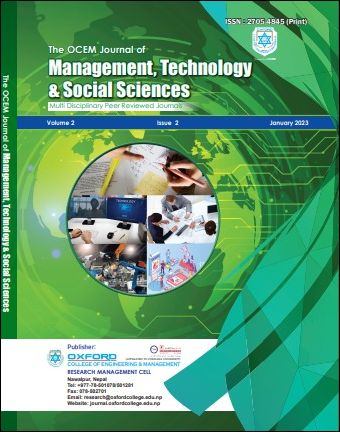Performance Analysis of Students in Nawalparasi Based on SEE Results in 2078 BS
DOI:
https://doi.org/10.3126/ocemjmtss.v2i2.54228Keywords:
Educational assessment, Grade Point Average (GPA), SEE results, Students Performance AnalysisAbstract
The primary objective of this study was to examine students' gender-wise performance in different subjects of SEE results, the average grade point of each subject, and the total grade points of all subjects in the SEE exam in 2078 in Nawalparasi district. The data for this study was obtained from the 2078 BS SEE exam results using secondary data collection methods. The data analysis technique of this study was descriptive statistics where correlation analysis, arithmetic mean, Mann-Whitney U test and Chi-square test of independence were used for data analysis. The study included the exam results of 13139 students from both private and public schools in Nawalpur district. There were 6654 male students (50.6%) and 6485 female students (49.4%) in the sample. The results indicated that the majority of the SEE participants students (97.9%) were between 13 to 21, and 34.7% were 16 years which is the maximum observed percentage of students. In 2078 BS, only 1.1% of students over the age of 21 participated in the SEE exam, according to the results.
The results importantly show a significant association between the gender of students in Grade Point Average (GPA) of the SEE results in 2078 BS. The majority of the students had poor results in the SEE-2078 exam, as 56.3% of students secured less than 2.39 GPA, whereas no one obtained 4 GPA out of 4. Finally, the results indicate that the total grade point (TGP) of girls (2.53) is higher than boys in compulsory Nepali compared to male (2.59) students in the SEE results of 2078 BS in Nawalparasi district. The implication of this study would be beneficial to the Education Department of Secondary Education Examination (SEE), educators, researchers, policymakers, and parents to improve the overall GPA in SEE results.
Downloads
Downloads
Published
How to Cite
Issue
Section
License
This license enables reusers to distribute, remix, adapt, and build upon the material in any medium or format for noncommercial purposes only, and only so long as attribution is given to the creator.




